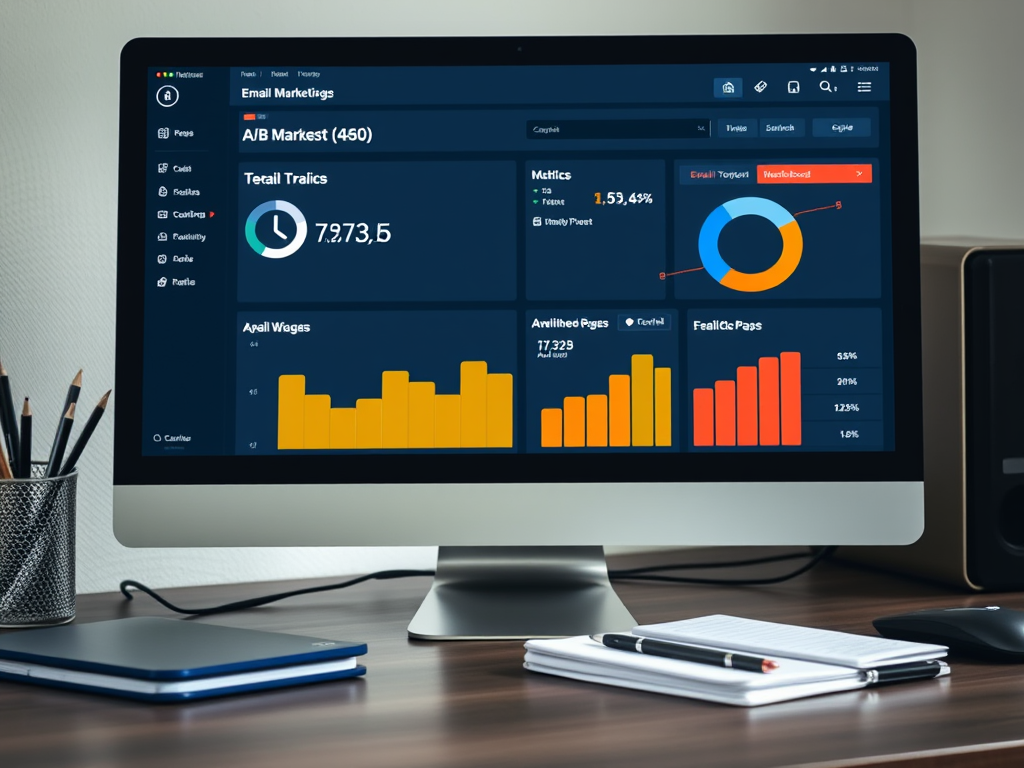Email marketing stands as one of the most effective channels for businesses today. Yet, simply sending out emails isn’t enough; it’s the strategies behind those emails that can make all the difference. This is where A/B testing comes into play—a method that allows marketers to fine-tune their communications with precision. By comparing two variations of an email, you can uncover insights that enhance your campaign’s performance. The art of A/B testing not only maximizes open and click-through rates but also allows your emails to resonate more deeply with your target audience. In a world saturated with information, A/B testing empowers you to stand out and make a measurable impact.
To successfully harness the power of A/B testing, it is crucial to understand the concepts and methodologies underlying the process. Whether you’re a seasoned marketer or just getting started, the goal remains the same: to boost engagement and ultimately drive conversions. Each element of your email—from subject lines to call-to-actions—holds the potential to affect your audience’s response. This article will guide you through a comprehensive approach to A/B testing, ensuring you have an arsenal of strategies at your disposal. As we delve deeper, you’ll learn how to set up, execute, and analyze tests effectively.
Understanding the Basics of A/B Testing

A/B testing, commonly known as split testing, allows you to test two email variations to see which one performs better based on various metrics. By sending these versions to a controlled group of your audience, you can measure the effectiveness of each email. Metrics typically observed include open rates, click-through rates (CTR), and conversion rates, which are crucial to understanding what resonates with subscribers.
- Open Rate: The percentage of recipients who opened the email.
- Click-Through Rate (CTR): The percentage of recipients who clicked on a link within the email.
- Conversion Rate: The percentage of recipients who completed a desired action after clicking through.
Choosing What to Test

Not all elements within an email need testing; focusing on key aspects gives more insightful results. This strategic approach allows marketers to understand what genuinely influences audience behavior. For example, you may want to test different subject lines, as they are the first thing your audience sees. Understanding what prompts recipients to open your emails can lead to significant increases in engagement. Likewise, experimenting with the layout of your emails or the wording of your call-to-action can yield beneficial insights.
- Subject Lines: Experiment with different lengths, phrases, and use of personalization.
- Email Layout: Test various designs for optimal engagement.
- Call-to-Action (CTA): Try diverse wording, colors, and placement.
- Send Time and Frequency: Identify the times and frequencies that yield the best results.
Setting Up Your A/B Test
Setting up your A/B test is vital to obtaining reliable data. It’s essential to define clear objectives before diving in; knowing your success metrics will guide your entire approach. The next step involves segmenting your audience to ensure both variations are sent to a similar group, eliminating any bias in results. After determining your variations, dispatch both emails simultaneously to maintain consistency across recipient behavior. Employing the right analytics tools post-dispatch will facilitate accurate results analysis.
| Element to Test | Purpose | Sample Variations |
|---|---|---|
| Subject Line | Drive open rates | “Spring Sale!” vs. “Don’t Miss Our Spring Specials!” |
| CTA Button | Increase clicks | “Shop Now” vs. “Grab Your Offer” |
| Send Time | Maximize engagement | 10 AM vs. 6 PM |
Best Practices for A/B Testing Emails
To make the most out of A/B testing, adhering to best practices is essential. Test only one variable at a time; this clears any confusion over what caused performance differences. Additionally, ensure your results are statistically significant to draw valid conclusions. Remember to keep your testing environment consistent to guarantee fairness and reproducibility. Utilizing these best practices will allow you to maximize A/B testing’s benefits.
Conclusion
A/B testing is an invaluable tool in the toolkit of email marketing, offering businesses a method to refine their messaging effectively. By understanding what elements to test, how to set up your tests correctly, and following best practices, you can implement a data-driven approach to your email campaigns. With each test, you’re not just learning what works; you’re increasing the chances of connecting with your audience on a deeper level, driving engagement, and enhancing conversion rates. Whether you’re tweaking your subject line or experimenting with designs, the insights gained from A/B testing can lead to a stronger and more effective email marketing strategy.
Frequently Asked Questions
- What is the ideal sample size for A/B testing? Aim for at least 1,000 recipients per version for more reliable outcomes.
- How long should I run an A/B test? 24 to 48 hours is generally sufficient; it may vary based on your audience’s engagement levels.
- Can I A/B test more than two versions of an email? Yes, this is known as multivariate testing, but results can become challenging to analyze.
- What tools can help with A/B testing? Mailchimp, HubSpot, and Google Optimize are popular options that provide helpful functionalities.
- How can I interpret the results of my A/B test? Focus on your primary metric and ensure you verify statistical significance before concluding.



